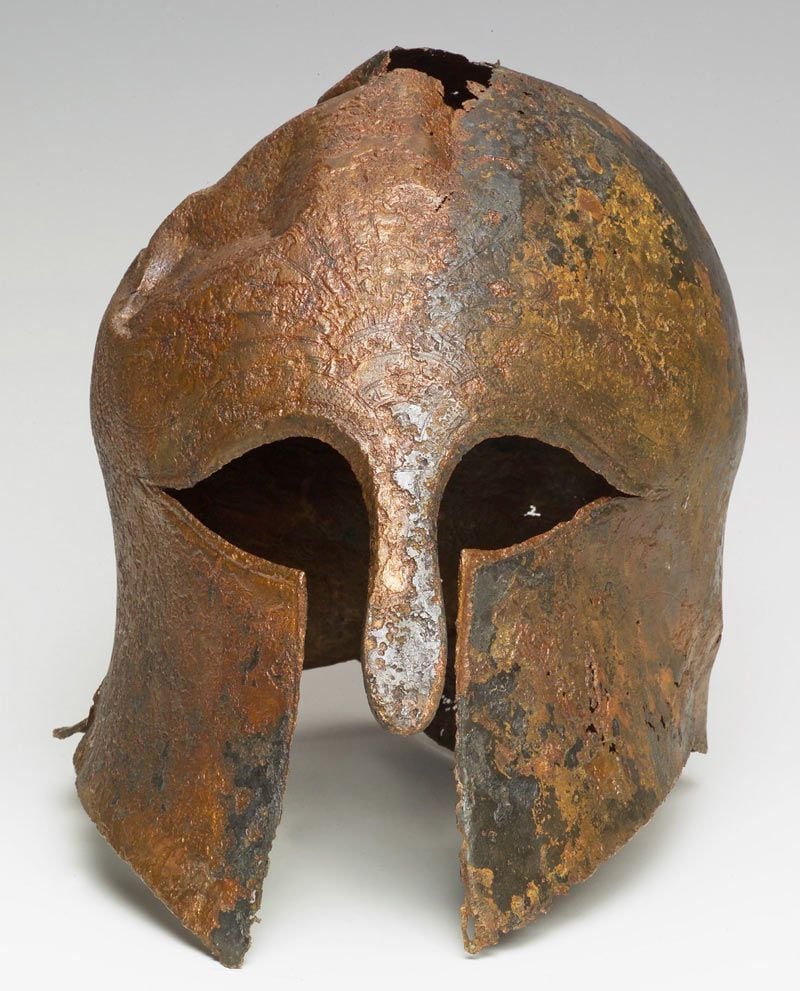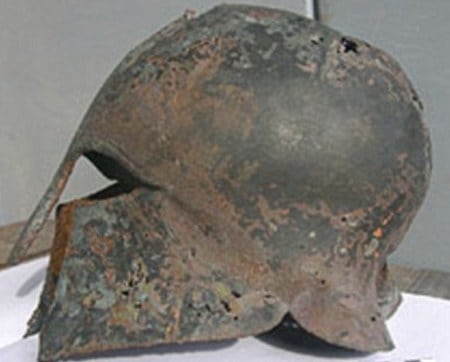Moc pěkná, vidět jí tak, když byla nová... 
13.2.2012 Helmet of a Greek warrior
Categories: Calendar , Nálezy nejenom s detektorem na blízkém východě

The rare helmet of the Greek warrior was discovered in 2007 by workers during dredging work in the port of Haifa. Nine years ago, experts published details of the artifact. The helmet was made of bronze, decorated with gold and animal motifs.
The bronze helmet, worn by a Greek warrior in the 6th or 5th century BC, was found in the sea off Haifa harbour in Israel. How part of the armour ended up there and who it belonged to remains a mystery.
"With its gilding and other decorations, it is one of the most beautiful pieces of Greek equipment in the world.lieutenant that has ever been found," said Jacob Sharvit, director of maritime archaeology at the Israel Antiquities Authority.
According to one theory, the helmet belonged to one of the warriors who sailed on a warship in the Greek fleet that fought the Persians. The other theory is that the helmet belonged to someone on a ship trading with the settlement of Tell Abu Hawan. During excavations in 1932 and 1933, pottery from Corinth, an ancient Greek city-state located along the Isthmus of Corinth, was found. In any case, according to the experts, the helmet most likely fell from its clumsy owner into the sea, where it remained for hundreds of years.
The helmet was discovered by the crew of a Dutch dredger and handed over to the Israeli authorities. They found that the helmet was made from a single piece of bronze that had been heated and shaped with a hammer. This technique was used to reduce the weight of the helmet without reducing its protective capabilities. The thicker layer was left where the warrior's nose and cheeks were.
When the helmet was pulled from the sea, it was badly corroded. Experts later discovered that the nose and forehead were decorated with carvings resembling the tail of a peacock. Above the eye slits were "snakes". On the cheek protector, a lion on the left and right side.
The sixth and fifth centuries BC were a period of war for the Greeks, the most famous conflicts being the Persian Wars and the Peloponnesian War. However, it is possible that the owner of the helmet did not fight for the Greeks at all, but for the Egyptian pharaoh Necho II. He was the ruler of the 26th dynasty in ancient Egypt in the Late Period. He inherited a unified and internally consolidated empire from his father, Psammetikos I.
"The helmet probably belonged to a wealthy Greek mercenary who took part in a series of wars immortalized in the Bible that ravaged the region at the time," experts said.
The helmet is housed in the Haifa Museum.


Sources: www.dailymail.co.uk, www.livescience.com
The article is included in categories:



